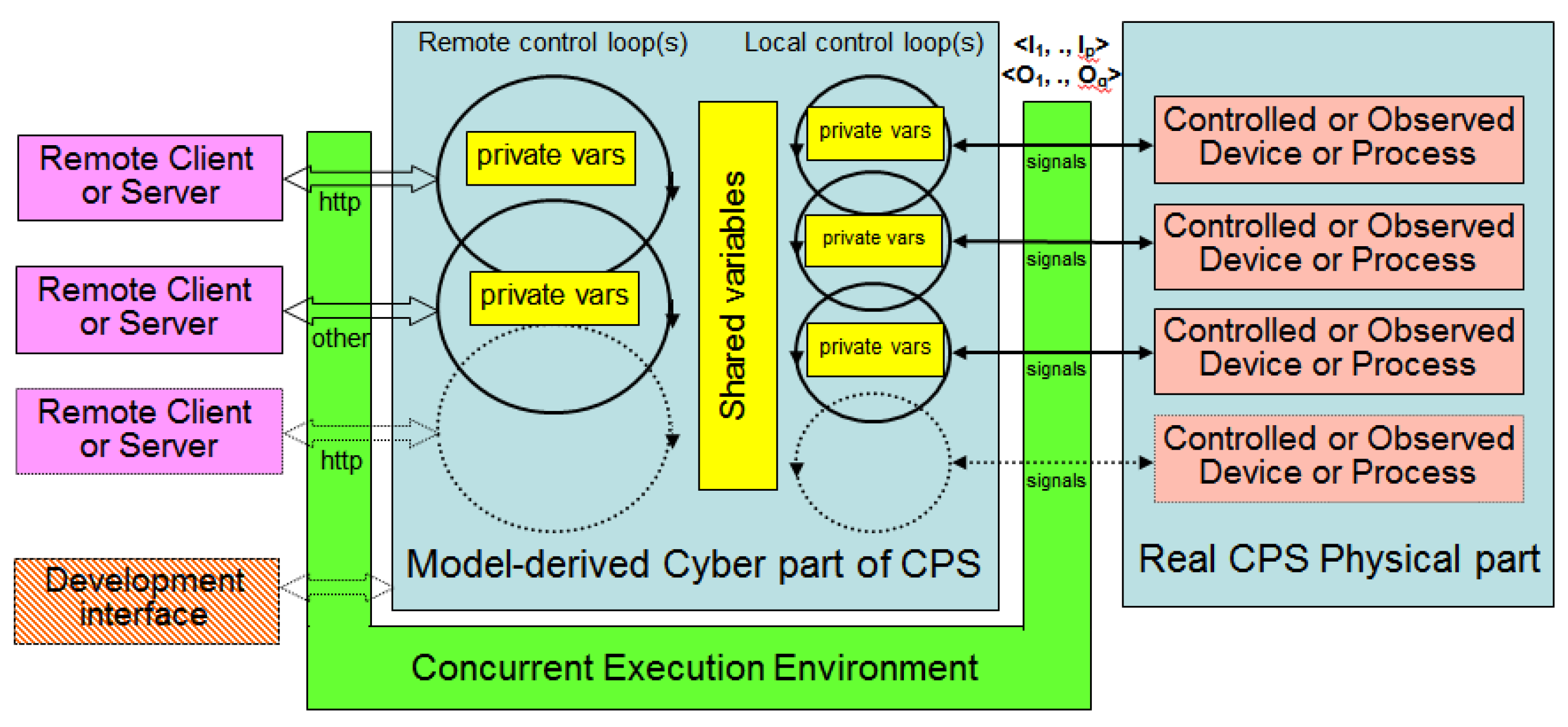Table Of Content
- Trajectory Tracking Control Design for 4WS Vehicle Based on Particle Swarm Optimization and Phase Plane Analysis
- Multi-project wafers for flexible thin-film electronics by independent foundries
- Why choose Collimator for Model-based development?
- Microstructure feature importance and mathematical relationship of microstructural features and electrical behavior

The weight vectors w and b are calculated by minimizing the risk function. When successfully executed, a model becomes the core “source of truth” for the design, rather than documentation. Changes applied to the model, ripple across the entire design in a near automated fashion. Documentation is generated from or is reflected by the model, rather than as the primary design artifact.
Trajectory Tracking Control Design for 4WS Vehicle Based on Particle Swarm Optimization and Phase Plane Analysis
The superior electrical performance of the nano-paste is demonstrated in Fig. Although the relative densities D for HPA and NPC are similar, there are significant differences of 50.2 μS.cm−1 and 84.3 μS.cm−1 in the electrical characteristics of σNPC and σHPA at 350 °C and 400 °C, respectively. 5, the predicted PM2.5 concentration values are consistent with the overall trend of the measured values. The prediction exhibits a minimal absolute error, which falls within the acceptable tolerance range. The model reflects the overall trend of PM2.5 concentration more sensitively. It also confirms the capability of the model to capture temporal changes effectively.
Multi-project wafers for flexible thin-film electronics by independent foundries
Owing to the amorphous nature of the semiconductor and the wafer-based approach with conventional semiconductor lithography equipment, IGZO transistors have the potential to follow a modest scaling approach for flexible electronics. The term ‘modest’ has been carefully selected to keep the manufacturing process flow as simple as possible to maintain the main benefits of this technology. IGZO scaling would enable better performing, lower power and even higher density circuits, whereby, in addition, a second threshold voltage or a p-type counterpart would create a substantial impact. The application field for wafer-based TFT electronics should be found in the high-density electronics domain on glass or flexible substrates, such as IoT chips, wearable patches, high-density arrays for microLED or microfluidics and many more. The revolutionary introduction of the foundry-mode access combined with the multi-project wafer concept would be a true game changer for the flexible electronics industry. Once the philosophy and foundation for model-based approaches have been developed and accepted, schedules shorten with accelerated design iterations which in turn reduce cost burdens, often with enormous positive affect.
Why choose Collimator for Model-based development?
Model-Based Design is widely used in industries where complex systems need to be developed efficiently, and it has proven to be a valuable approach in achieving accurate, reliable, and cost-effective designs. It is commonly used in aerospace, automotive, control systems, and other domains where precision and safety are crucial. In this post, I explained what MBSE is, showed how it relates to systems engineering, and discussed the fundamentals of model and modeling. My next post will take a more practical approach and discuss requirements and requirements models. MBSE also fosters communication among stakeholders, systems engineers, and developers. First, stakeholders define the system’s objectives and the context in which it will operate.
Microstructure feature importance and mathematical relationship of microstructural features and electrical behavior
A more recent semiconductor, invented in 2004 and enabling room temperature processing, is based on metal-oxide complexes, such as the combination of indium–gallium–zinc oxide (IGZO) (ref. 22). Mostly, this semiconductor comes in an amorphous state, enabling a high downscaling potential. IGZO outperforms a-Si with a charge carrier mobility of more than 10 cm2 V−1s−1. Both IGZO and a-Si can be manufactured on the largest glass substrates, making them suitable for large-area applications such as large televisions and imagers. Another challenge is that both a-Si and IGZO typically yield only n-type semiconductors, limiting the design of pixels and circuits to a unipolar configuration. The absence of a complementary semiconductor imposes greater complexity and limitations in achieving low-power, high-performant circuits.
Essentially virtual models can be built up and disassembled like Lego blocks or modules, which provides countless advantages for development and testing. This modular software can be easily broken down into smaller parts, allowing you to add onto these components over time. Descriptions of these domains are well documented and discussed by, among others, Defense Acquisition University (DAU), NASA, and Avi Sharma. The difference that MBSE makes is that these fundamental systems-engineering domains are defined not as a set of documents, but in the model itself, i.e., in a formal way using a modeling language. The model represents an argument for how the system must be designed for it to be successful. We have all seen, used, or created models throughout our lives, ranging from toys that represent cars or planes to mathematical formulas that describe and explain physical phenomena such as thermodynamics or gravity.
Due to the recent development of this approach, up to now only view attempts in context to synthetic microstructure reconstruction have been performed in the field of material science18. Hence, proper microstructure quantification as well as microstructure feature assessment is important to foster the understanding of the underlying processing-structure-property relationship. To confirm the feasibility of our proposed hybrid strategy and the effectiveness of our model, we designed a series of comparative experiments.
How MBD is Changing the Game
Aerospace: Physical Prototypes Aren't Dead—They’re Getting Better - ENGINEERING.com
Aerospace: Physical Prototypes Aren't Dead—They’re Getting Better.
Posted: Wed, 13 Sep 2023 07:00:00 GMT [source]
Various approaches have been presented, e.g., for X-ray computed tomography (XCT)19 or for Scanning Electron Microscopy (SEM)20,21,22. SEM-based methods provide advantages with respect to contrast and resolution. Nevertheless, fully automated segmentation of SEM image data especially for porous materials is challenging because of the ever present shine through artifacts23. Here, conventional segmentation methods are often limited due to misinterpretation of fore- and background information24. Their applications are far-reaching, e.g., for autonomous driving2, natural language processing3, or speech recognition devices4. Recently data driven approaches have gained high interest, particularly to accelerate the material development from atomic scales to microstructure level5,6.
What is Model-based Development?
The operational side of the model can contain the description of "the world as-is" and the future state. Discover how to unlock efficiency, navigate the MBSE landscape, accelerate projects and more. Leverage a set of applications for asset monitoring, management, predictive maintenance and reliability planning.
Engineering has come a long way since its inception, and visionary designers have always pushed the boundaries of what’s possible by refining designs using traditional 2D formats. First, let’s dive into the power of breaking down barriers and embracing new, innovative approaches that are shaping the future of engineering. It’s more efficient to have software auto-generated because it is done so in a consistent and qualified manner. SCADE is certified to the DO-178C level, the standard for flight safety-critical software aboard commercial aircraft. The operational point of view is the perspective of users, operators, and business people. It should represent business processes, objectives, organizational structure, use cases, and information flows.

Such approaches need prior knowledge about the material category and a general expression, which usually cannot be attained easily. However, the presented MVLR model is suitable for the generalization of the conductivity prediction from microstructural features. Recently, denoising diffusion probabilistic models (DDPMs) for the generation of high- quality image synthesis have been introduced10. The model represents a parametrized Markov chain, which is trained utilizing variational interference to generate samples, matching the data after finite time10.
In the previous sections, we qualitatively tried to explain the correlation between the extracted microstructure features and the electrical behavior of the material. The understanding of such correlations, however, is challenging due the underlying complexity and multi-faceted problems. Here, we establish a mathematical relationship between the microstructure and property by applying a machine learning-based deployment in the form of a linear regression model1,51, see Methods. The presented methodology provides an essential step for the prediction of material properties, of unseen conditions, for porous materials. For model-based development, defining the system architecture well allows engineers to properly combine systems, subsystems and components for optimal performance and not lose time managing interfaces with other teams. Indeed, the developed unique workflow paves the way towards machine learning driven accelerated material design.
B Evaluated relative density D as a function of the sinter temperature for HPA (blue), HPB (gold) and NPC (red) extracted from the segmented VOIs. C Electrical conductivity σ vs. relative density D for HPA (blue), HPB (gold) and NPC (red). D Skeletonized copper phases illustrate the 3D copper struts distributions for sample HPA, HPB and NPC between 175 °C and 400 °C. Color coding indicates the strut diameters variation within the volume ranging from 0 (white) to 1 µm (yellow).
The LTPS version, with complementary n-type and p-type transistors, yields clock frequencies almost on par with the original MOS6502, serving many applications in the late 1980s. The flex LTPS implementation shows great benefits in terms of clock frequencies and respective power consumption, stemming from a larger charge carrier mobility and complementary technology. The newest flexible LTPS chip exhibits a maximum clock frequency of 454.5 kHz, which is only twice less than the original commercial chip, making it already a viable chip for various applications.
HPA and HPB show micron-sized as well as nano-sized pores within the VOI, however, they differ in the porosity with 42.4% and 61.7% at 175 °C, respectively. Figure 2b shows the densification43,44 of the three porous copper configurations upon sintering. Here, the relative density D is defined as the ratio of the copper volume to the total volume of the VOI. The hybrid-paste HPA and nano-paste NPC exhibits, compared to HPB, a rather similar behavior for the densification. The changes in the relative density from 175 °C to 400 °C for HPA and NPC material are about 18.5% and 20.8%, respectively.
We developed a test program in assembly language, using key instructions such as ‘arithmetic operations’, ‘load’, ‘store’, ‘branch’ and many more. This assembly is subsequently compiled into opcodes and uploaded into the block RAM of the FPGA. Demonstrates the waveforms captured by the oscilloscope for the program, which calculates the square root of 9. Later, to prove complete functionality, we ran the assembly code of the popular Snake game on the microprocessor and played it in real-time10. Both chips have been characterized with a 48-pin probe card after the fabrication cycle, without dicing and delamination. The probe card includes level shifters to enable verification with an FPGA that generates the clock, the 64 kB memory and universal asynchronous receiver–transmitter (UART) (for more details, see the Methods).

No comments:
Post a Comment